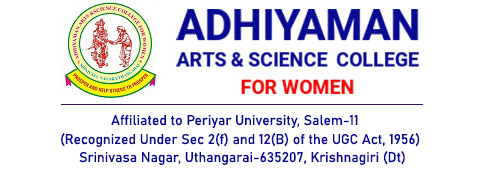Adhiyaman Arts & Science College: Ensuring Accessibility for All
Adhiyaman Arts & Science College for Women is a public university in Trichy, Tamil Nadu, India. It’s mission is to provide higher education, and advanced technical training to women in the greater Trichy area. In many ways, Adhiyaman is similar to U.S.-based community colleges. It provides an important service as a post high school academic institution.
On Campus
Just like schools in the United States, parking lot access to the Adhiyaman campus is limited to allow both students and their families to quickly get to classes. It’s no surprise, then, that the buildings and grounds are accessible to people in wheelchairs via ramps and handrails – like all institutions of higher education, Adhiyaman knows that complying with the comprehensive ADA vertical grab bar requirements is an important step to protect students and visitors.
Accessibility is a right, and educational institutions require accessibility from every building to their campuses. It makes sense: after all, there can be no learning without infrastructure, and buildings that cannot accommodate clients with disabilities are defeating their own purpose. In short, ADA vertical grab bar requirements are a vital aspect of the educational experience.
But it’s not just about those who are physically disabled. The issue is one of freedom. Did you know that one in five people suffers from a disability? That’s a staggering portion of the population. Many disabilities are temporary, but over time, a majority of people will be affected by a limited-loss of independence. From broken limbs to unexpectedly early onset of arthritis, structural impacts like the ADA vertical grab bar requirements are critical to allow equality throughout your educational buildings.
The ADA Guidelines
The ADA vertical grab bar requirements are part of the ADA Guidelines and state that:
- “(1) At least one grab bar shall be provided on each side wall of the toilet compartment … and shall extend at least 18 in (455 mm) measured horizontally from the side wall …
- (2) The outside grab bar shall extend at least 12 in (305 mm) from the partition. …
- (3) If a second grab bar is installed, it shall be located 33 in (840 mm) minimum and 36 in (915 mm) maximum above the finished floor.”
Some of the same guidelines are enforced in educational buildings across the world, including in the case of Adhiyaman Arts & Science College.
The Importance of Access and Safety
Ensuring accessibility throughout school campuses, gymnasiums and study halls is crucial to keeping students safe and healthy. When we allow students physical access to everything in a public institution, it preemptively monitors their safety and responds positively to their needs. It places infrastructure at the same standard as the rights and freedoms of the people using it.
But what about compliance? What does it mean for schools, colleges and universities? In short, there are two aspects of compliance for ADA standards in school buildings: risk management and liability.
Risk management is only partially concerned with liability. In fact, in some cases, risk management refers to the assessment of injuries that could happen if accessibility guidelines are not followed explicitly. Liability, on the other hand, is concerned with claims made against a public organization for financial recompense or penalties.
For example, if a wheelchair-bound student attempts to access the cafeteria alone, their incidence of injury is almost doubled compared to those who use assistance to enter and exit buildings. If they become injured, the school may be held responsible for ignoring ADA standards. Conversely, if a disabled student is helped to the cafeteria and encounters a grab bar that isn’t securely fastened to its mount, they are likely to fall. In this case, the school would be liable for an injury.
For colleges and universities, the best way to safeguard against liability is to follow the letter of the law. It only takes a few minutes to ensure each building complies with ADA vertical grab bar requirements. But going beyond minimum standards takes a little more effort.
Proactive Measures for Accessibility
If you want to ensure your campus is as accessible as possible, it’s time to be proactive. Seek out advice from experienced professionals who will help you indicate which aspects of your ADA compliance program are successful and which need improvement. Focus on safety first, as students are more likely to be injured by weak mounts than a lack of safety rails and grab bars.
What Does the Research Say?
When a college campus is built to conform to the notion of equality for people with disabilities, everyone can benefit. After all, ADA vertical grab bar requirements exist to promote safety in every space with public access. This creates a higher standard of normal. An environment that already has existing provisions for accessibility makes it no trouble to lower barriers for those who need extra support.
The real question is surrounding outcomes. That is, do students with disabilities benefit from an ADA-compliant educational building? It turns out that they do. Research suggests that students who use ADA-compliant facilities achieve better educational outcomes than non-disabled students.
In our next article, we’ll take another look at compliance among educational buildings and where the standards are being breached.






